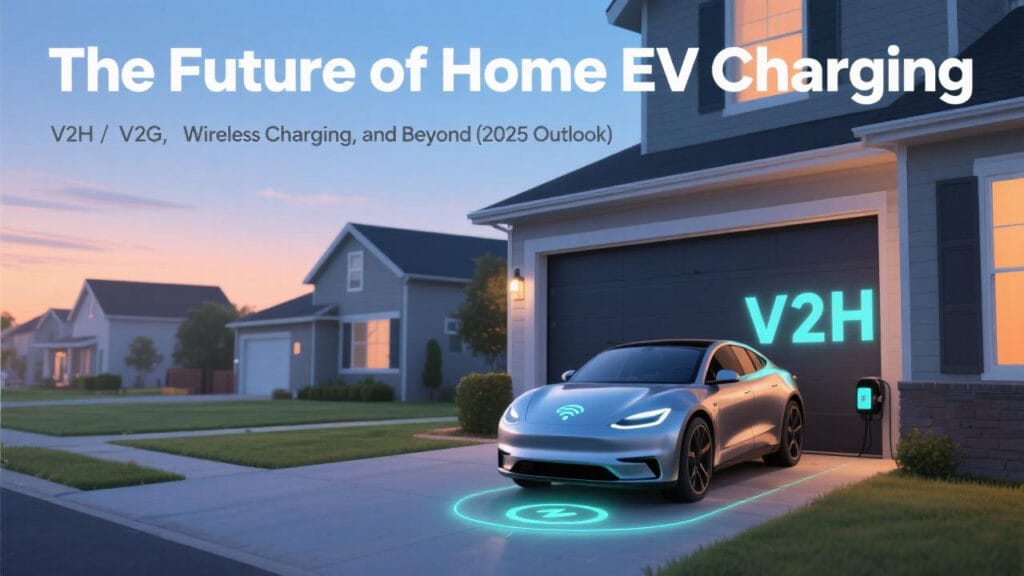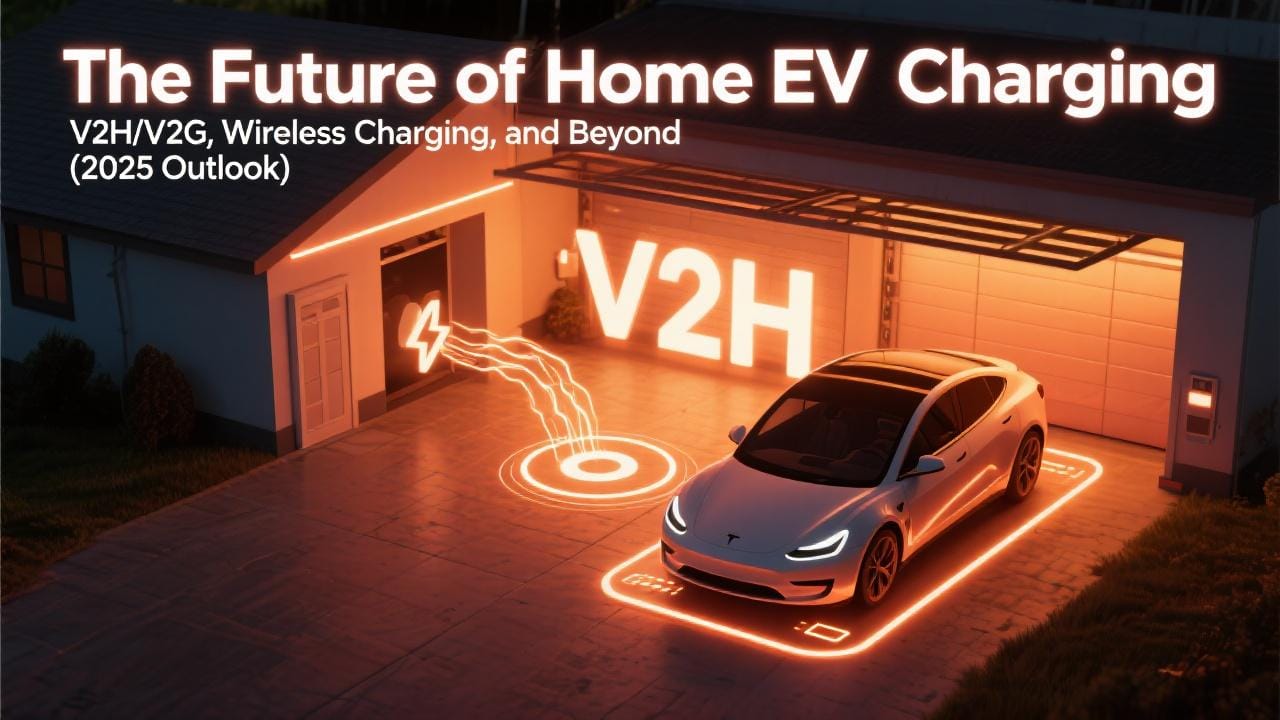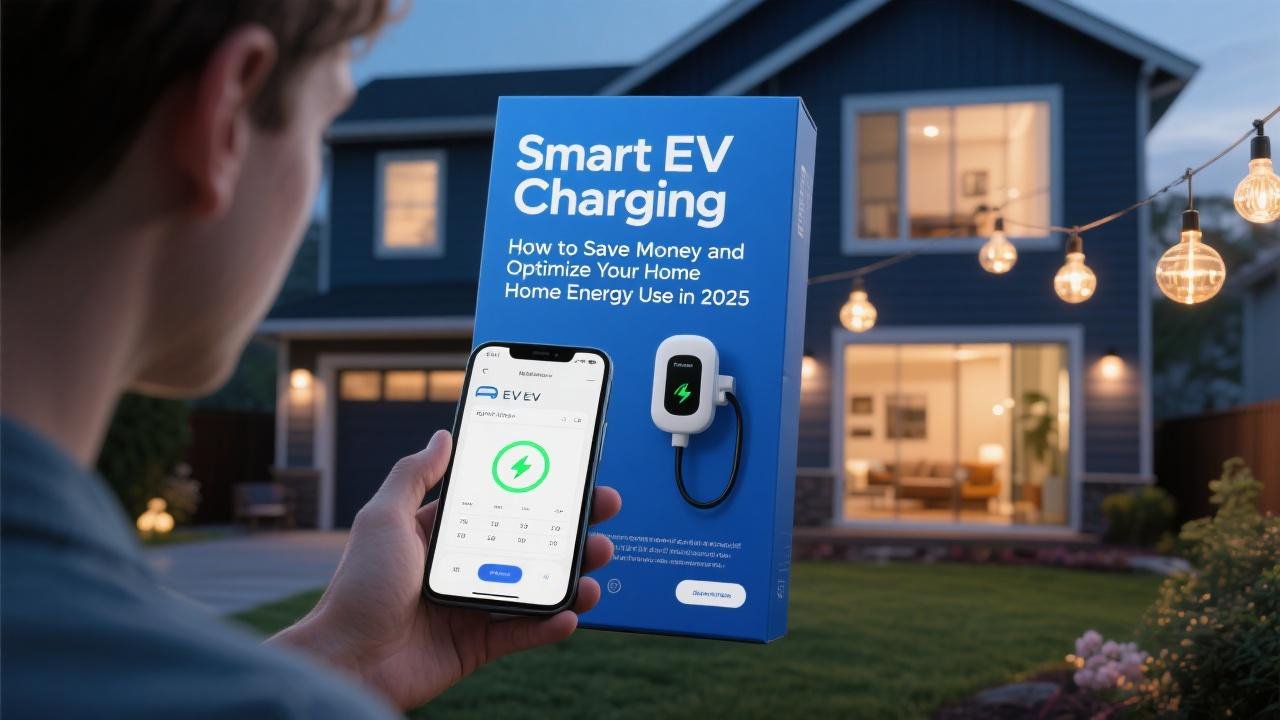The EV Charging Revolution is Just Getting Started
Electric vehicle (EV) adoption is rapidly accelerating, and with it, the technology and infrastructure for EV charging are undergoing a dynamic transformation. While Level 2 home charging and public DC fast charging are the norms in 2025, the horizon is bright with innovations poised to make EV charging even faster, more convenient, more integrated, and smarter. From standardized plugs to cars that can power your home, the future of EV charging is exciting. This guide explores some of the key trends shaping the EV charging landscape in 2025 and beyond.EV Charger Incentives: Tax Credits and Rebates for Home Charging in 2025
1. Standardization of Charging Connectors (NACS Dominance)
- The Trend: One of the most significant shifts in 2025 is the widespread industry adoption of Tesla’s NACS (North American Charging Standard, now being standardized as SAE J3400) connector. Major automakers like Ford, GM, Rivian, Hyundai, Kia, BMW, and many others are transitioning their North American EVs from the J1772/CCS1 connector to NACS.
- Impact:
- Simplified Public Charging: Eventually, this will mean fewer adapter hassles for non-Tesla EV owners wanting to use Tesla’s Supercharger network (once access is fully rolled out and interoperability is ensured).
- Streamlined Home Charger Choices: Home charger selection will become simpler as most new EVs will share a common port. Universal chargers like the Tesla Universal Wall Connector are already addressing this transition.
- Infrastructure Buildout: A common standard can accelerate the buildout of public charging infrastructure.
2. Faster Charging Speeds (Higher Power Delivery)
- Home Charging (Level 2): While most home Level 2 chargers currently top out around 11.5 kW (48A) or 12 kW (50A) , future advancements might see slightly higher power delivery for AC charging, though this is often limited by vehicle onboard chargers and home electrical panel capacities.
- Public DC Fast Charging: This is where significant speed increases are happening.
- 350kW+ Chargers: Chargers capable of delivering 350kW or more are becoming more common, allowing compatible EVs to add hundreds of miles of range in 15-20 minutes.
- Megawatt Charging System (MCS): Primarily for heavy-duty electric trucks and buses, MCS is being developed to deliver multiple megawatts of power, enabling ultra-fast charging for large commercial vehicles. Huawei, for instance, has unveiled 1.5 MW chargers. Phoenix Contact’s new CCS2 CHARX connector is ready for 1,000 kW.
- 4C Charging Rates: Some new battery and charger technologies are aiming for “4C” charging, which means a full charge in about 15 minutes (C-rate refers to the charge rate relative to battery capacity).

3. Bidirectional Charging: Your EV as a Mobile Power Source
This is one of the most exciting frontiers in EV technology. Bidirectional charging allows electricity to flow not just to your EV, but also from your EV back to your home, the grid, or other devices.
* Vehicle-to-Home (V2H):
* How it Works: During a power outage, your EV’s battery can power your home, acting like a large mobile generator.
* Benefit: Provides backup power without needing a separate home battery storage system (though it can work in conjunction with one). Requires a bidirectional-capable EV and a compatible home charger/inverter.
* Vehicle-to-Grid (V2G):
* How it Works: EV owners could potentially sell stored energy from their car batteries back to the utility grid during peak demand times, helping to stabilize the grid and earning income or bill credits.
* Benefit: Creates a new revenue stream for EV owners and helps utilities manage demand. This is still in earlier stages of deployment and requires utility program support.
* Vehicle-to-Load (V2L):
* How it Works: Allows you to use your EV’s battery to power appliances, tools, or devices directly, often through built-in outlets on the vehicle. Great for camping, worksites, or emergency situations. Many new EVs are already offering this feature.
* Current Status (2025): More EVs are launching with bidirectional capabilities, and compatible chargers are becoming available. Widespread V2G adoption will depend on utility program development and regulatory frameworks.
4. Wireless (Inductive) EV Charging
- The Concept: Imagine parking your EV over a charging pad on your garage floor or in a parking spot, and it begins charging automatically without needing to plug in any cables. This is the promise of wireless EV charging.
- How it Works: Uses inductive charging technology, similar to how some smartphones charge wirelessly. A transmitting coil in the pad creates an electromagnetic field that induces a current in a receiving coil on the EV.
- Current Status (2025): While the technology exists and is being trialed in various pilot programs and some aftermarket solutions, it’s not yet a mainstream standard for home or public charging. Challenges include efficiency (wireless is typically less efficient than wired), cost, alignment precision, and standardization.
- Future Potential: Offers ultimate convenience, especially for autonomous vehicles that could drive themselves to charging spots. Expect slow but steady progress in this area.

5. Smarter, More Integrated Charging Networks
- AI and IoT Integration: Smart charging systems will increasingly use Artificial Intelligence (AI) and the Internet of Things (IoT) to optimize charging based on real-time electricity prices, grid conditions, renewable energy availability (like home solar production), and user preferences.
- Improved User Experience: Expect more seamless app integration, easier payment systems for public charging (like Plug & Charge, where the car communicates directly with the charger for authentication and billing), and better real-time charger availability information. Tesla’s Supercharging pilot with dynamic on-peak and off-peak pricing based on live utilization is an example of this trend.
- Grid-Interactive Buildings: EV charging will become a key component of “grid-interactive efficient buildings,” where buildings (and the EVs connected to them) can dynamically adjust their energy consumption to support grid stability and reduce costs.
6. Increased Focus on Charging Accessibility and Equity
- More Public Chargers: Continued buildout of public Level 2 and DC fast charging infrastructure, especially in underserved urban and rural areas, is a priority.
- Multi-Unit Dwelling (MUD) Solutions: Innovative solutions for providing charging access to residents of apartment buildings and condos who may not have dedicated garages or driveways.
- Affordable Charging Options: Efforts to ensure that EV charging, both public and private, remains affordable and accessible to all income levels.
An Electrifying Road Ahead
The future of EV charging in 2025 and beyond is incredibly dynamic. Driven by the push for standardization with NACS, the demand for faster and more convenient charging, the exciting potential of bidirectional power flow, and the integration of smart technologies, how we power our electric vehicles will continue to evolve rapidly. These advancements promise not only to make EV ownership more practical and appealing but also to position EVs as integral components of a cleaner, more resilient, and intelligent energy ecosystem. As these trends mature, EV owners can look forward to an even more seamless and empowered charging experience.



